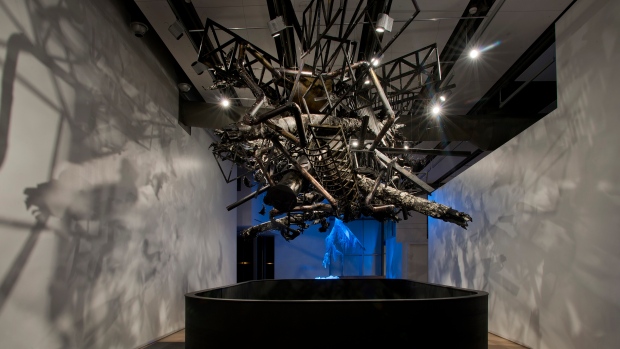Brett Story made a film about climate change that doesn’t once use the phrase.
Instead, “The Hottest August” walks a camera down everyday streets and asks people: “How do you feel about the future?”
“I was reflecting on my own disinterest in watching climate change films, despite a very profound investment and sense of the stakes,” said the Toronto-based filmmaker, whose work has won awards around the world.
“One of my own frustrations with a lot of climate change films is that they assume the problem is that we don’t have information. For me, there’s a different set of questions I wanted to ask.”
Canadian artists from singers to sculptors are doing the same. From writer Margaret Atwood’s climate fiction, or cli-fi, “MaddAddam” trilogy to an upcoming album from singer/songwriter Grimes, climate change permeates Canadian art.
“Climate is a hugely prominent topic and has been for a little while,” said Julian Carrington, programmer for Toronto’s Hot Docs and Planet In Focus documentary festivals. “It’s not niche anymore.”
“Absolutely,” said Mia Feuer, a Winnipeg-born sculptor teaching at the California College of the Arts. “As a grad student, I don’t remember climate issues being addressed in people’s work. I would say now, it’s absolutely everywhere.”
The challenge is to make work that addresses an inescapable fact of modern life without churning out agitprop.
“We’re not just getting together and making signs to take to the protest,” Feuer said.
For some, climate change is a new lens through which to look at some old themes.
“Where do we as individuals fit with society? Where does society fit with nature?” asks Edmonton poet Alice Major, whose most recent collection is titled “Welcome to the Anthropocene.”
“That just kind of grew constantly in me and that’s what the title poem is about — where do we belong?”
For others, the work itself raises the issue.
Feuer often uses petroleum-based materials such as Styrofoam. One afternoon, she was sitting on the banks of the Suez Canal watching tankers glide by.
“It was almost like a light bulb fired off in my mind. I needed to understand where these materials come from.”
Eventually, that led to work such as “An Unkindness,” an assemblage of what looks like oil-soaked industrial detritus that has shown in Washington’s prestigious Corcoran Gallery.
Whatever the inspiration, art isn’t a lecture, said Marcus Youssef, a Vancouver playwright whose one-hander “Dust” has been performed across North America.
“We as humans have a natural resistance to being hectored,” he said.
“(Art) is a perspective that isn’t didactic. It reflects some sort of human response to the question that has the potential to affect people more deeply or in a surprising way.”
Not that artists are averse to changing people’s behaviour. They just think there’s a better way than haranguing them.
“I like to make films that respect audiences and give people space to do thinking and feeling on their own terms,” Story said.
“That’s what art can do — make us both feel alive and also able to see things differently. I think that’s a precondition to being political actors in the world.”
“There’s a potential through the arts to connect in an emotional way, in a spiritual way,” said Feuer. “That might be how people might be moved to seek out change, to ask bigger questions.”
Major agrees.
“Poetry is not a screwdriver. It’s not something you have clearly defined results from.
“Poetry comes out of something happening in our hearts and good poetry does connect. That connection — you have no idea what comes out of that, but it could be a small motivation to pay attention.”
Audiences are receptive. Major said “Welcome to Anthropocene” drew reviews and attention as far afield as Los Angeles.
When Feuer showed her work in Calgary, “it was very positive.”
“I was hesitant to show it, (but) it had a great reception.”
Good art, including art about climate change, brings people together, said Youssef.
“One of the places where political art can fall is that it makes it easy to go, ‘Oh, that’s the bad guy.’ I actually don’t believe there is a bad guy.
“It’s trying to find the humour and humanity in everybody, the recognition of the degree in which we are all complicit.”
This report by The Canadian Press was first published Dec. 29, 2019.
Source link
Related
























